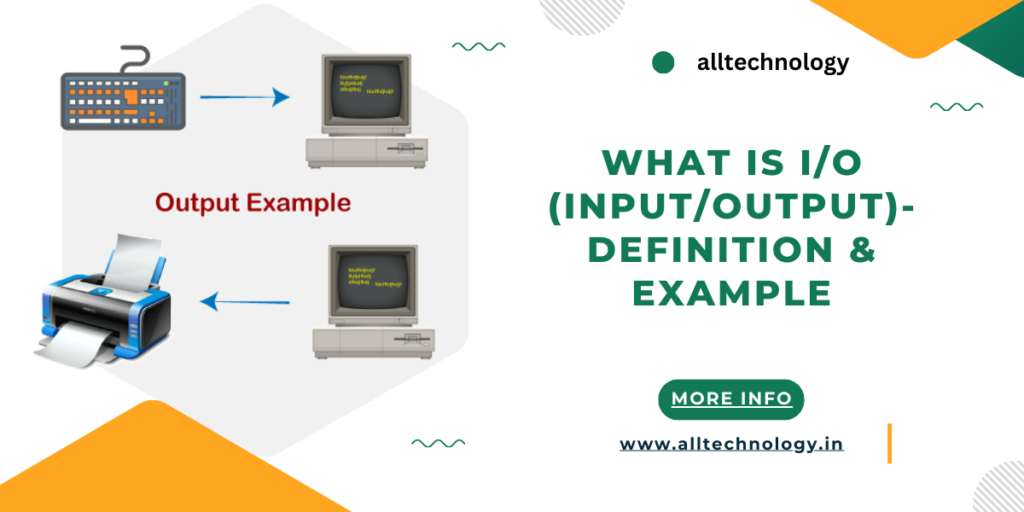Introduction
Hello Bloggers welcome alltechnology blog. In this blog you will learn What is I/O (input/output)- Definition & Example. In the vast realm of computing, where the digital landscape unfurls its intricate tapestry, there exists a fundamental concept that serves as the bedrock upon which the edifice of computational processes stands: Input and Output, or as it is affectionately abbreviated, I/O. Within the labyrinthine corridors of binary logic and electrical impulses, I/O emerges as the conduit through which the ethereal dance of data transforms into tangible action, and vice versa. To comprehend the profundity of I/O is to unravel the very essence of computational functionality, to peer into the inner workings of the digital cosmos itself.

The Enigma of Input
At the heart of every computational endeavor lies the enigmatic realm of input, a veritable cornucopia of data streams flowing ceaselessly into the voracious maw of the machine. Input, in its myriad forms, manifests as the lifeblood of computation, the raw material from which the alchemy of information extraction transpires. From the humble keystroke of a weary typist to the intricate signals cascading through the neural pathways of artificial intelligence, input embodies the convergence of human intention and technological capability.
However, the true essence of input transcends mere data transfer; it encapsulates the very essence of human interaction with the digital realm. Consider, for instance, the subtle nuances encoded within a photograph, the emotive resonance of a musical composition, or the semantic richness of a textual narrative. Each represents a distinct facet of input, a testament to the boundless diversity of human expression interfacing with computational machinery.
The Riddle of Output
In the ethereal realm of computational output, the enigmatic dance of data takes on tangible form, weaving intricate patterns of pixels, pulses, and potentials. Output, in its myriad guises, represents the culmination of computational endeavor, the moment when abstract algorithms coalesce into concrete action. From the luminous glow of a computer display to the rhythmic hum of a robotic arm in motion, output embodies the transformative power of computation made manifest.
Yet, the enigma of output extends beyond mere mechanical motion or visual representation; it embodies the culmination of human ingenuity and technological innovation. Consider, for instance, the immersive vistas rendered within a virtual reality simulation, the melodic harmonies emanating from a digital symphony, or the intricate patterns woven by a generative art algorithm. Each represents a triumph of computational creativity, a testament to the symbiotic relationship between human imagination and technological capability.
Conclusion
In the labyrinthine corridors of computing, where zeros and ones converge in a delicate dance of binary ballet, the concept of input and output emerges as a guiding light—a beacon of connectivity that illuminates the path towards a future where human and machine coexist in harmonious symbiosis. With its bewildering array of modalities and its enigmatic interplay of complexity and burstiness, input and output beckon us to embark on a journey of exploration and discovery—a journey where the boundaries of possibility are limited only by the depths of our imagination.
FAQ
Question 1. What is between input and output?
An input device is connected to a computer that sends out data into the computer, while an output device is connected to a computer that receives incoming data.
Question 2.What is the basic input and output?
Input/Output System, is software stored on a small memory chip, also known as firmware.
